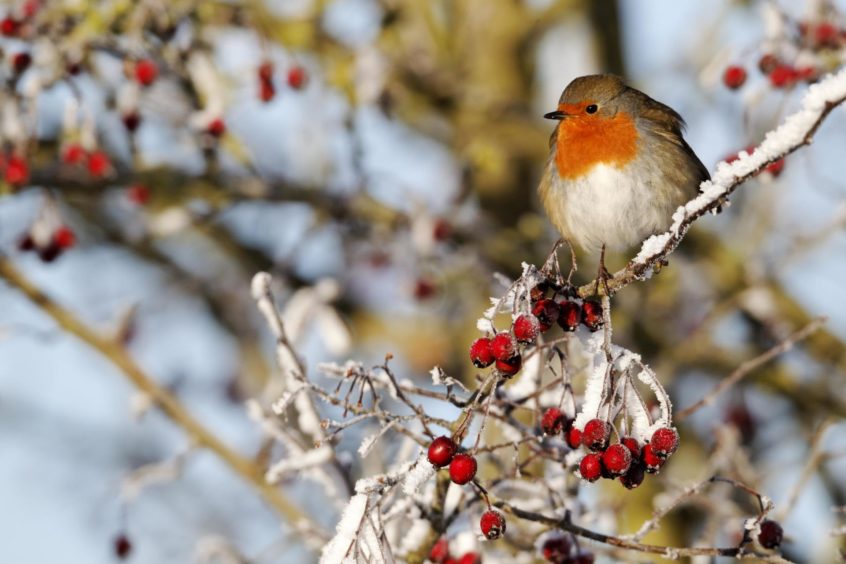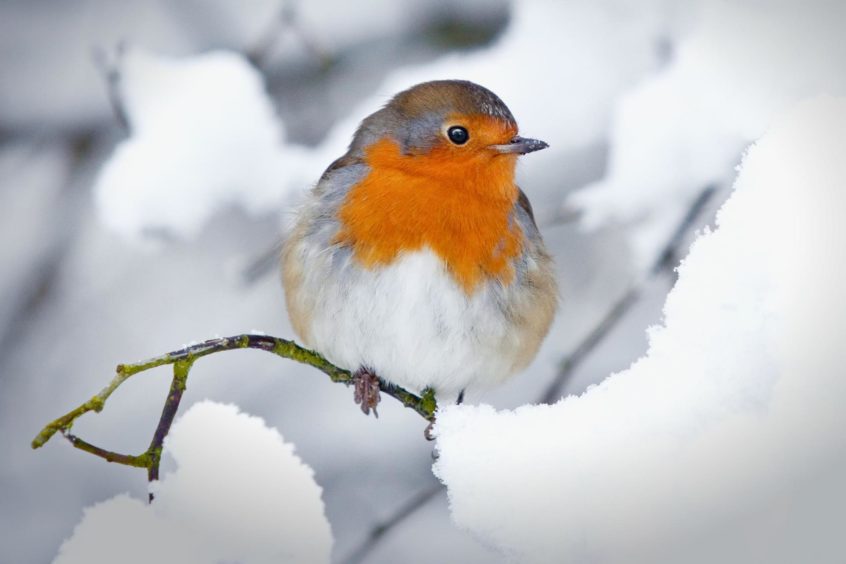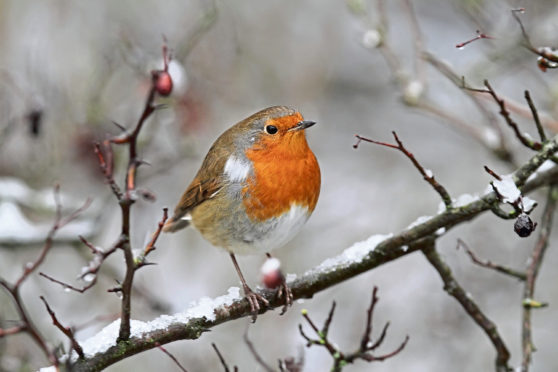The robin and Christmas go together like hand in glove, and as this red-breast followed me around the garden, its affinity and bond with humankind was a joy to watch.
I was moving felled branches from one part of the garden to another, and each time I dragged a branch across the lawn, the opportunistic robin bounded in my wake looking for wee beasties that had been scraped-up.
The keenness of this robin’s eyesight was striking, and even the tiniest wriggle in the grass was enough to set it swooping down to quickly devour the worm or grub. I had never really noticed a robin’s eyes before, but as I paused to observe the bird, their large size shone out at me, glinting in the soft winter sun. These deep, languid eyes are an essential tool for survival, enabling robins to forage even when the light is poor at dawn and dusk.
Indeed, each morning when taking my dog for a walk, and when it is still pitch black, I often see a robin flitting along on the path ahead of me. They really are early risers, and in our towns and cities, robins will often sing in the middle of the night under the glare of nearby streetlights. The song is a marvel to behold; in spring and summer it is sung with real gusto, clear and sharp but always with a hint of the melancholy. In winter, it is a softer, more fluting warble, often heard on milder days when the air is calm.

Both sexes are territorial, but the male is particularly so, and should another male alight on his patch, then with feathers ruffled and wings drooped he will do everything in his power to see off the unwelcome intruder. Usually it is all about threat and posture with both males squaring up to each other with necks outstretched, showing off their vibrant red breasts. But sometimes an unseemly brawl will ensue, with one robin pinning down the other in a frenzy of aggression.
David Lack in his classic work ‘The Life of the Robin’ found that robins would react at once to the detached breast feathers of a dead adult, and that it was the red colour and not the whole bird that acted as the trigger for aggression. Such violent behaviour may seem a bit over-the-top, but for a robin its territory is of all-consuming importance, for it provides an exclusive food source during the lean days of winter and an area to raise young during spring and summer.

The soft focus of robin red-breast against white winter snow might be one of the iconic images of Christmas, signalling a season of peace and goodwill, but in reality, the humble robin is a bit of a bruiser, making this intriguing bird one of our greatest natural enigmas.
Info
Robins eat seeds, fruits, insects, worms and other invertebrates. They will also visit garden bird tables and feeders to feed on scraps and mealworms.










